“Strange things are happening today.” Au secours ! [Help!] (Abel Gance, 1924)
Oct
18
Au secours !

A rather tall ghost struts along a nonplussed Max. DPs: Émile Pierre, André-Wladimir Reybas & Georges Specht.
A [favourite] horror comedy*. This post goes out to Max Linder, who – together with his wife Hélène “Ninette” Peters – took his own life 100 years ago, on October 31, 1925.
Max (Max Linder) bets that he can spend one whole hour in a haunted castle without calling for help. In face of all the (in camera!) terrors, Max faces his fears with ease. Until, just minutes before the clock strikes midnight, the phone rings.
– title card
And there was this other bet. One between Linder and director Abel Gance. Linder bet that Gance would not be able to shoot a movie in only three days. With ghosts, skeletons, and wildlife galore, the result is a delightful Grand Guignol à la Max.
* the Bales 2025 Film Challenge for October is horror-themed as opposed to date-based, and is all about favourites. Expect non-horror and films I believe to be relevant instead.
Bales2025FilmChallenge
狂った一頁 [Kurutta ichipėji / A Page of Madness] (Teinosuke Kinugasa, 1926)
Oct
14
silent cinema
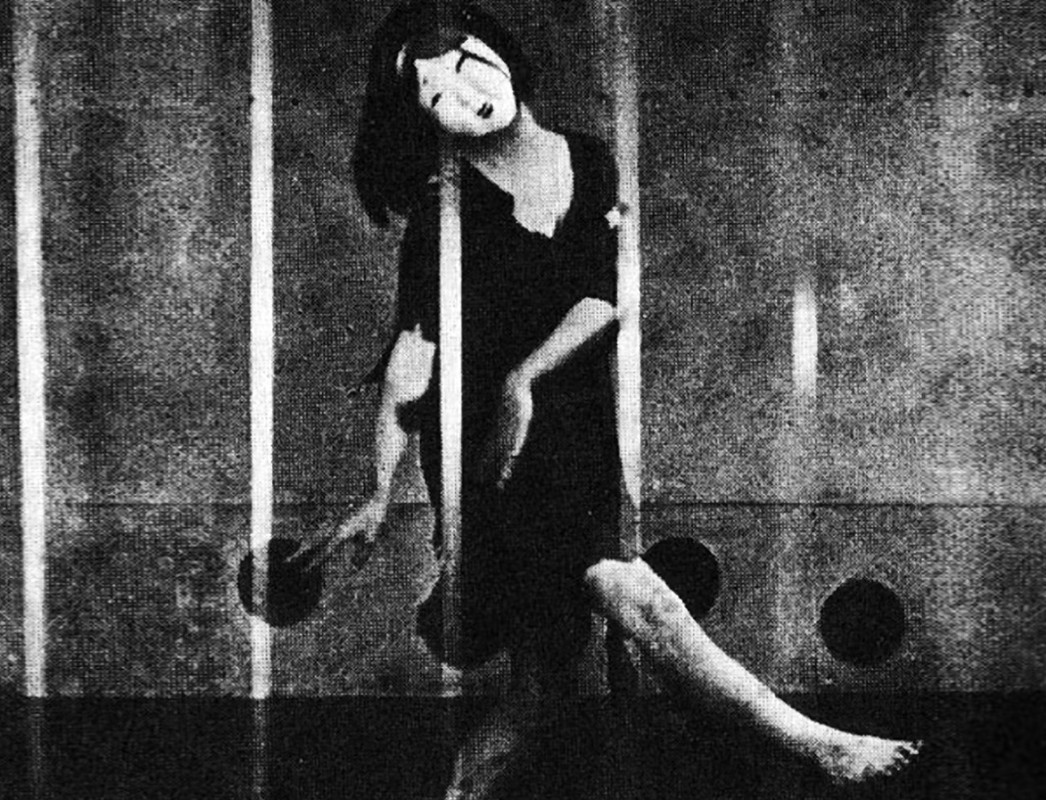
A masked inmate (Eiko Minami) dances. The shot of the dancer is superimposed over a shot of her cel's bars, putting the viewer in the position of the husband witnessing – or is he hallucinating – an inescapable nightmare (via). DP: Kōhei Sugiyama.
A [favourite] silent horror film*
Incomplete and, despite the generally accepted popular Occidental opinion, not a horror film. Oh, to have seen this narrated by Musei Tokugawa…
* the Bales 2025 Film Challenge for October is horror-themed as opposed to date-based, and is all about favourites. Expect non-horror and films I believe to be relevant instead.
“Here lies
Pierre MOLINIER
born on 13 April 1900 died around 1950
he was a man without morals
he was proud of it and gloried in it
No need to pray for him.”Satan bouche un coin (Jean-Pierre Bouyxou + Raphaël Marongiu, 1968)
Oct
10
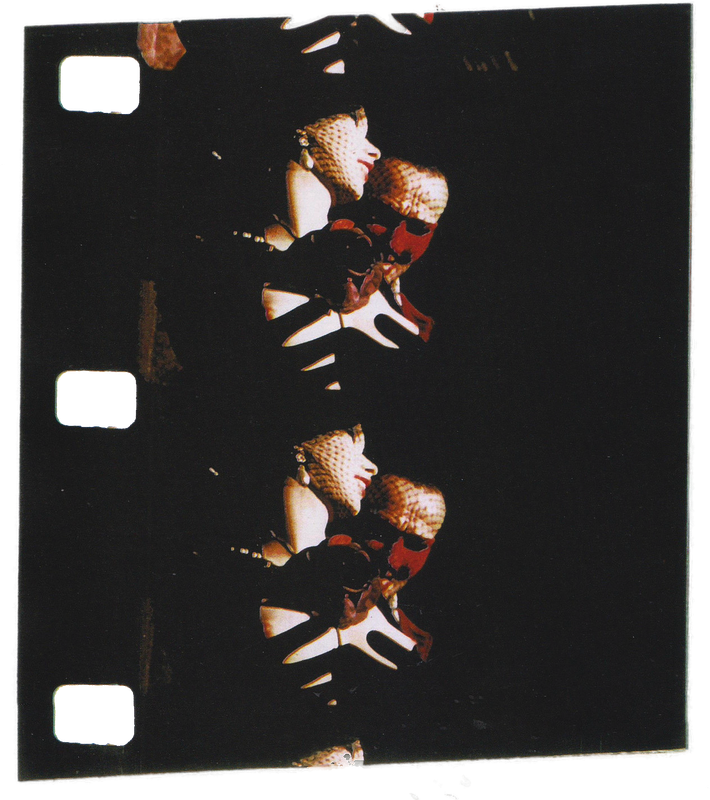
In an autoerotic display, Androgyne (Pierre Molinier) fondles a woman (Janine Delannoy) wearing one of his masks that echoes Molinier's deceased sister (via). DPs: Jean-Pierre Bouyxou, Raphaël Marongiu & Loïc Picard.
A [favourite] color [horror] film*
– Pierre Molinier, mock-epitaph (via, NSFW as goes without saying)
* the Bales 2025 Film Challenge for October is horror-themed as opposed to date-based, and is all about favourites. Expect non-horror and films I believe to be relevant instead.
“Blood of Christ. Demon. A curse upon this man. A curse that he will never forget me. Blood of my body. Until the grave. A curse that he will never forget me.” Il demonio [The Demon] (Brunello Rondi, 1963)
Oct
6
exorcism
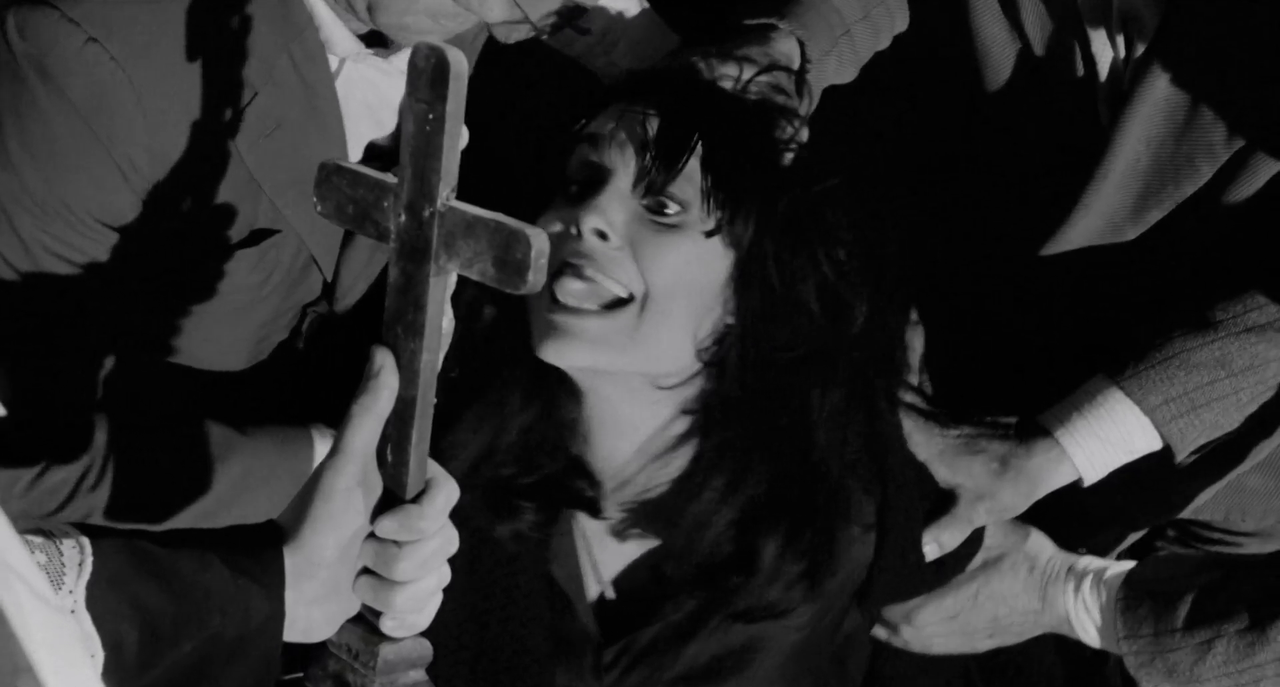
While several men hold her down, Purif (Daliah Lavi) sticks out her tongue to the crucifix held up to her. DP: Carlo Bellero.
[A favourite] exorcism film*
– Purificazione
When a rejected young woman puts a curse on her heart's desire, the locals see nothing less than witchcraft. It is decided that Purif must be possessed, and exorcised.
* the Bales 2025 Film Challenge for October is horror-themed as opposed to date-based, and is all about favourites. Expect non-horror and films I believe to be relevant instead.
妖怪百物語 [Yōkai hyakumonogatari / Yokai Monsters: 100 Monsters] (Kimiyoshi Yasuda, 1968)
Oct
4

One-hundred monsters! (via). DPs: Yasukazu Takemura & Shōzō Tanaka.
[A favourite] horror movie with more than one bad guy*
A shrine must give way to a brothel, and a game of supernatural storytelling follows. At the end of the spooky tales, the landowner neglects to complete the all-important purification ceremony resulting in one-hundred yōkai – one for each story – coming out to haunt the rich man and his cronies.
* the Bales 2025 Film Challenge for October is horror-themed as opposed to date-based, and is all about favourites. Expect non-horror and films I believe to be relevant instead.
“Again he shook his head. The world's gone mad, he thought. The dead walk about and I think nothing of it. The return of corpses has become trivial in import. How quickly one accepts the incredible if only one sees it enough!” Soy leyenda (Mario Gómez Martín, 1967)
Oct
3
zombies
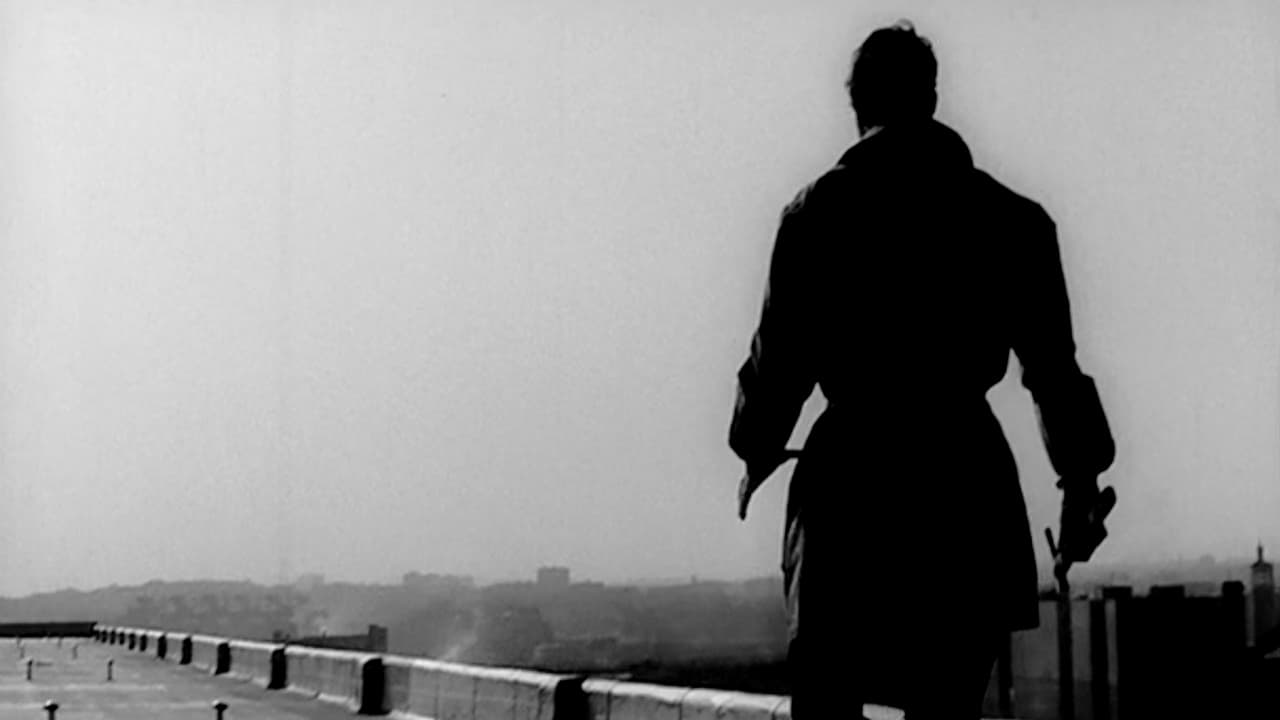
Robert Neville (Moisés Menéndez) looking out over an empty rooftop. DP: Jesús Ocaña.
(A favourite) zombie movie*
Now, settima. Of all the zombie movies in the world you had to pick a vampire story? Why yes. Yes I did.
– Richard Matheson, I Am Legend (1954)
Just like my actual favourite zombie film, that one from 1968, Soy leyenda is based on Richard Matheson's post-apocalyptic horror novel I Am Legend (1954). The story describes a world where the living have become undead vampire-like creatures. A lone man tries to rationalise that new world through reason and science, and legend.
In the man's mind, the undead become the familiar, the vampire. In our mind, watching this, we believe to see the foreshadowing of the popculture zombie. The abandoned well-known landscapes, the ceaseless repetition of what the old life had instilled, the normalcy of the grotesque. Oh how familiar they have become.
* the Bales 2025 Film Challenge for October is horror-themed as opposed to date-based, and is all about favourites. Expect non-horror and films I believe to be relevant instead.
“You are one of us now. The Queen of the Night will bear you up on her black wings.” Vampyros Lesbos (Jesús Franco, 1971)
Oct
2
Dracula
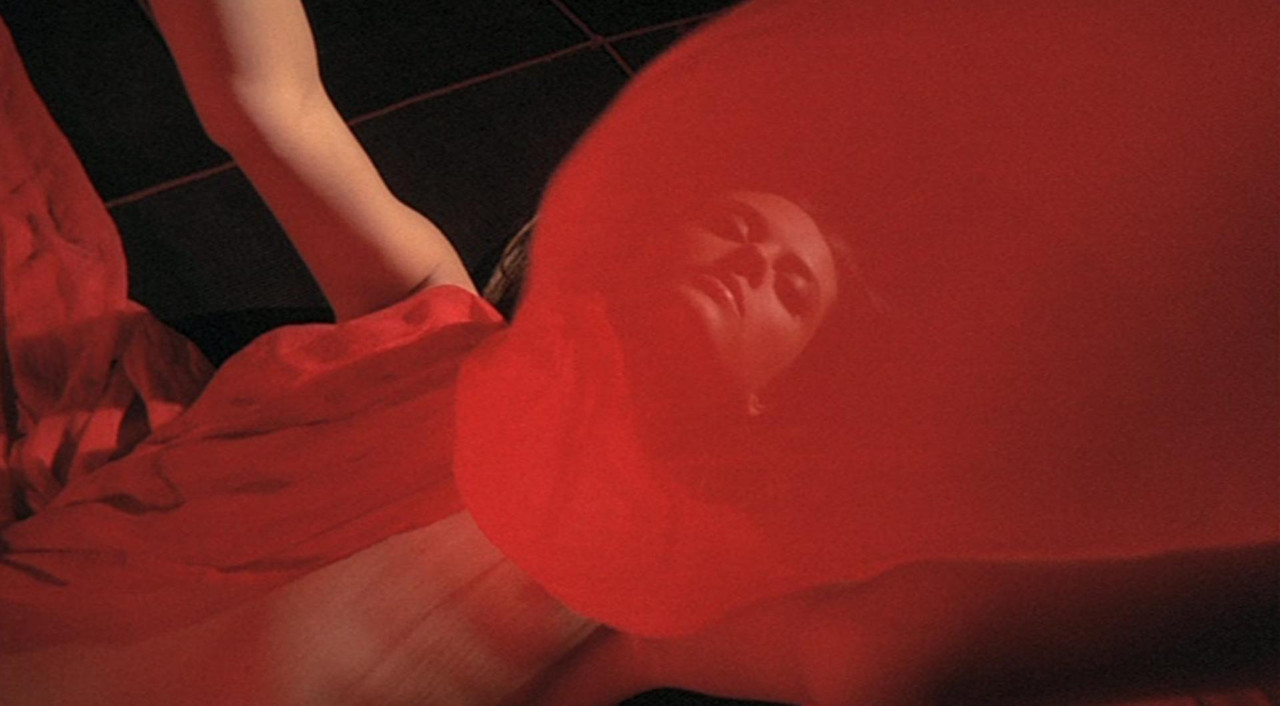
The Countess (Soledad Miranda, sigh…) in a blood curling striptease (via). DP: Manuel Merino.
A favourite Dracula movie. As my very most favourite Dracula movie has been claimed, I go with its nearest competitor that somehow also features my favourite Jesus*
Linda (Ewa Strömberg) has been summoned by Countess Nadine Carody (Soledad Miranda) to handle a real estate inheritance from a certain Count Dracula. Spellbound, she finds herself on a small island, and helpless in the Countess' embrace.
– Countess Nadine Carody
A film that can easily hold up against Jean Rollins' dreamy vampire erotica, this love letter to Soledad Miranda's brooding torment is a delight to watch and a pinnacle in Jess Franco's filmography. Its influence on neo-Giallo Amer and Dario Argento – particularly his Suspiria – is evident, and that in itself should give you enough clues of how much of an essential chapter Vampyros Lesbos is in adult European filmmaking.
* the Bales 2025 Film Challenge for October is horror-themed as opposed to date-based, and is all about favourites. Expect non-horror and films I believe to be relevant instead.
“There are no ghosts in daylight. You'll get used to our nights at Diodati. A little indulgence to heighten our existence on this miserable Earth. Nights of the mind, the imagination. Nothing more.”Gothic (Ken Russel, 1986)
Oct
1
Frankenstein
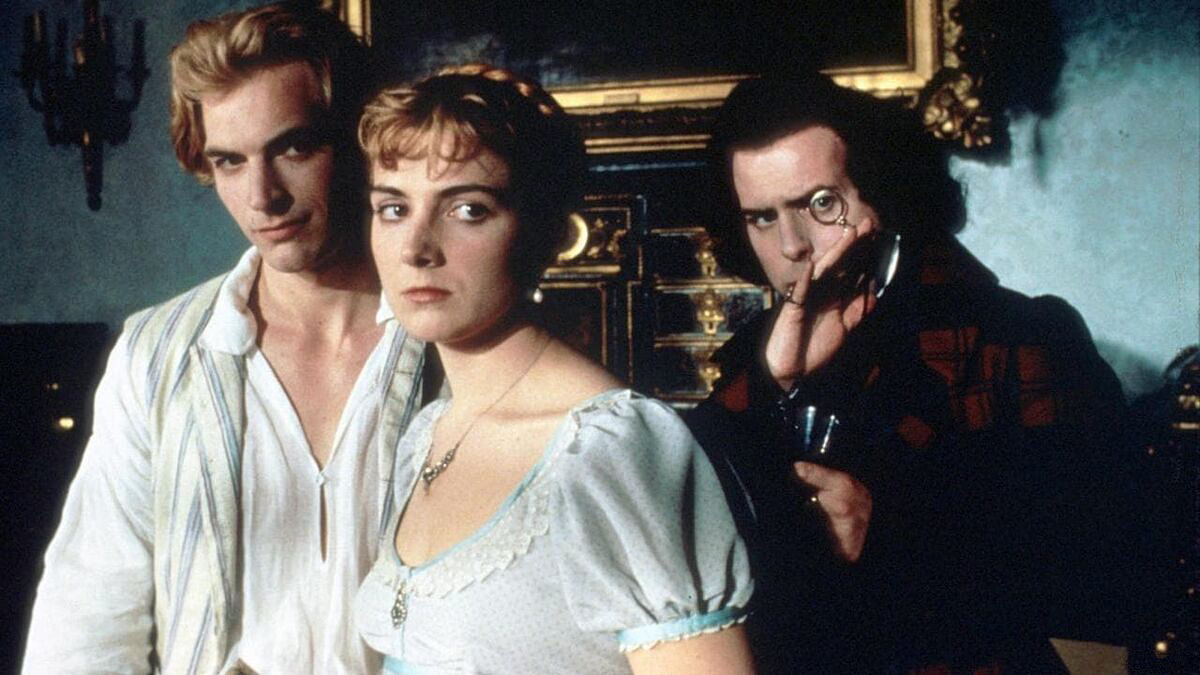
Percy Shelley (Gabriel Byrne), Mary Shelley (Natasha Richardson) and Dr Polidori (a deliriously delicious Timothy Spall). DP: Mike Southon.
A [favourite] Frankenstein film.
One wet, ungenial summer in 1816, lovers Mary Godwin and Percy Shelley, and Mary's stepsister Claire Clairmont, visited a dear friend at Villa Diodati. That friend was Lord Byron, exiled and residing in the Swiss villa with his physician Dr John Polidori
– Lord Byron
Forced indoors, over the cause of three days they turned to the occult, to laudanum, to stories from the Fantasmagoriana, and the horrors of their own. That summer, Frankenstein saw the light of day.
“This mirror reflected a painting… with words. Chinese idiograms. 'The she-crane calls in the shadow. Her cheek answers.'” Le orme [Footprints on the Moon] (Luigi Bazzoni + Mario Fanelli, 1975)
Sep
30
International Translation Day
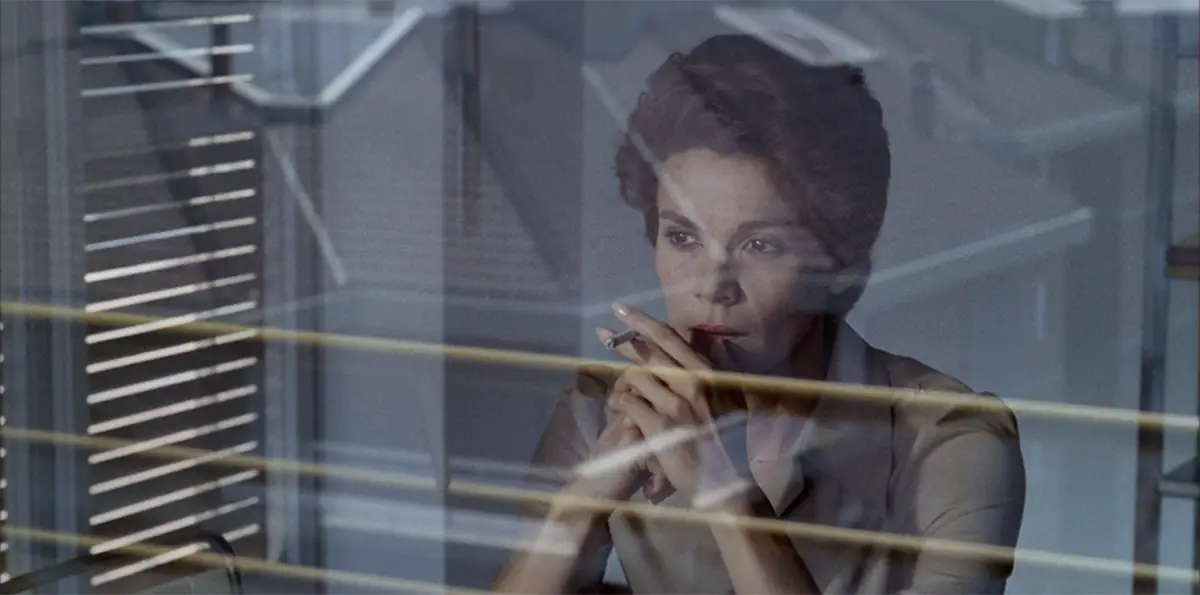
Alice reflected/reflecting in a glass pane (via). DP: Vittorio Storaro.
A translator for International Translation Day
– Alice Campos
Alice, the always fantastically brooding Florinda Bolkan, works as a translator when all of sudden she loses her job and finds herself on the small island of Garma. People tell her she has been there before, recently, but she knows this is not possible.
Some English-language posters try to sell Le orme as an action-ridden sci-fi giallo, but oh boy leave that perception behind and you're in for one unsettling treat! Le orme can be placed somewhere between Don't Look Now and that other Alice film, Chabrol's Alice ou la dernière fugue. Drifting and elegant, distant and claustrophobic.
“Let's face it; the future as a Rolling Stone is very uncertain.”Charlie Is My Darling [Rolling With The Stones] (Peter Whitehead, 1966)
Sep
28
Ben E. King – 1938
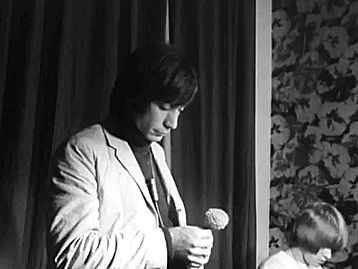
Charlie sheepishly smells a carnation (via), Brian can be seen in the background. DP: Peter Whitehead.
Soul or rhythm and blues for Ben E. King's birthday.
– Brian Jones
While then-manager Oldham's dream of an all-Stones A Clockwork Orange never manifested, there was an attempt to counter The Beatles' A Hard Day's Night (1964). That too, failed. Instead, Charlie became a cinéma vérité roadmovie of the Stones' touring Ireland in 1965. Whitehead's camera is there for Charlie.